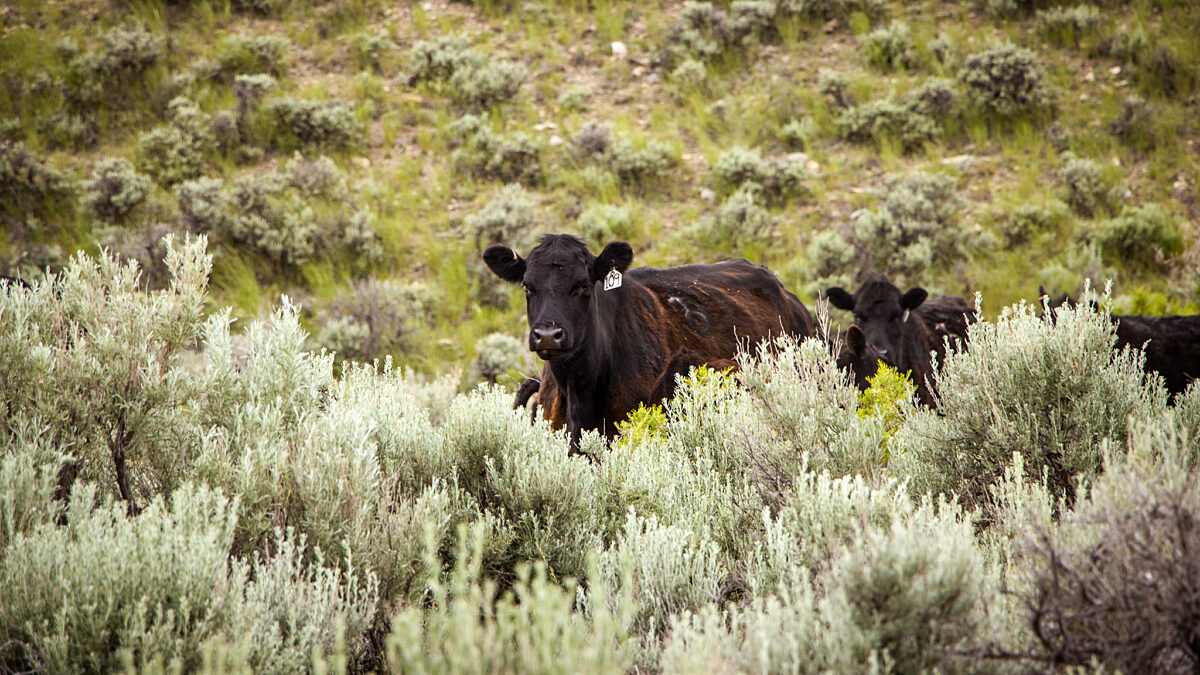Pasture, Rangeland and Forage… A Potential Solution
TOPICS
PastureJohn Newton, Ph.D.
Chief Economist

photo credit: AFBF Photo, Dylan Davidson
John Newton, Ph.D.
Chief Economist
USDA’s Pasture, Rangeland and Forage is an area-based insurance plan that covers pasture, rangeland or forage used to feed livestock by insuring against the lack of precipitation. In the event the precipitation amounts within an area fall below the insured level and rainfall index, PRF uses county-based values to make a loss payment to the policyholder. The lack of precipitation is the only insurable loss under PRF.
For 2019, USDA’s Risk Management Agency modified the method for determining CBVs for PRF to reflect the value of forage production per acre, grazing fees and state-level pasture rental rates. This will better account for state-level average grazing fees and pasture rental rates than using hay prices alone.
State-level pasture rental rates represent an average of the county-level data. During 2018, pasture cash rental rates in the U.S. averaged $12.50 per acre and were unchanged from 2017. Pasture rental rates ranged from a low of $6.70 per acre in Texas to a high of $54 per acre in Iowa. Pasture rental rates in 13 states increased over 2017 levels, were unchanged in seven states and decreased in five states.
While a majority of states saw higher pasture rental rates in 2018, by introducing state-level rental rates into the CBV methodology, nearly 75 percent of PRF-eligible counties saw lower CBVs in 2019. Out of 3,107 counties with grazing CBVs, the rates were reduced by an average of 23 percent in 2,251 of those counties. Slightly more than 25 percent of the counties insurable under PRF will see higher CBVs in 2019, with an average increase of 15 percent. Figure 1 highlights the year-over-year change in CBVs at the county level.

Comparing Cash Rents and County-Based Values
Given that PRF includes pasture rental rates in the determination of CBVs and that payments from PRF can be used to purchase or get access to forage for a livestock operation, rental rates make for a good comparison in the ability of PRF to help livestock producers manage risk.
State-level pasture rental rates, collected by NASS, tend to be more stable from year to year than county-level data for pasture rental rates. For this reason, as well as county-level rental rates not being available in all areas, RMA used the more stable (and consistently available) state-level average pasture rental rates for 2019, and then adjusted that average to the county level based on productivity measures. This resulted in a 2019 CBV below the reported county-level pasture rental rates in certain counties.
In a comparison of state- and county-level pastureland rental rates to the 2019 CBVs, CBVs in 190 counties were less than the state-level pastureland rent in 2018. The ratio of county CBVs to state-level cash rents was as low as 46 percent in portions of South Dakota, Figure 2.

State-level rental rates may not be as variable as rental rates at the county level. Given that pasture rental rates were mostly higher or unchanged from 2017 to 2018 at the state level, 2019 CBVs were compared against 2017 county-level pasture rental rates.
In 225 counties the 2019 CBVs were below the county-level pasture rental rates. Meanwhile, in the remaining 1,715 counties, the CBVs were above the county-level pasture rental rates. In more than 1,000 counties, CBVs were more than 200 percent higher than the county-level cash rental rate, Figure 3.

A Potential Solution
In areas where the CBVs are below the state- and county-level pasture cash rental rates, the risk management protection provided by PRF is diminished; ranchers in these areas will get less financial assistance to help cover the costs associated with buying supplemental feed or hauling water. While premium rates are also lower, due to the reduced liability, it is the reduction in risk management benefits that concerns most producers.
Given that USDA examines the pricing for PRF each year, incorporating county-level pasture rental rates as one metric in the determination of CBVs is a potential solution. There is a lag in data availability in county- versus state-level rental rate data as published by USDA, but there are methods to account for that.
Thus, and as identified above, in some portions of the country one solution may include establishing CBVs at or near the pasture rental rates in those counties where data is available. This change in methodology will increase coverage in counties where the current CBV is below the pasture rental rate, and vice versa, which will allow for PRF to help many ranchers better manage risk. While the premiums for coverage would likely increase, it would be a welcome improvement to a key risk management tool.